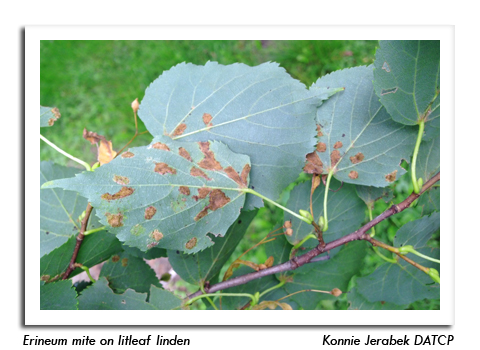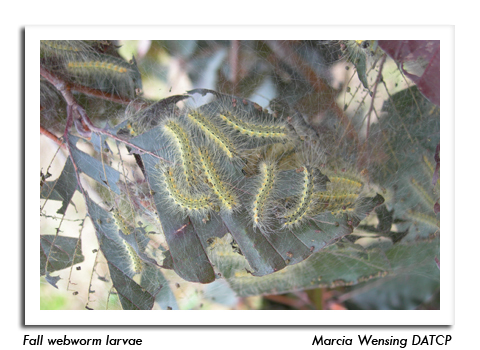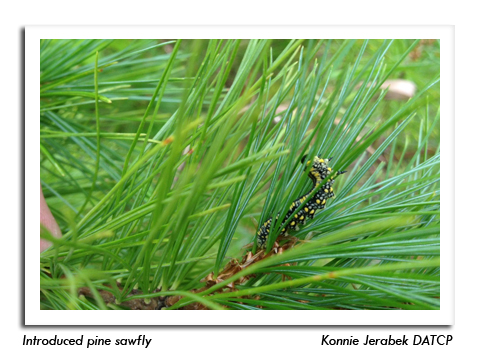
 |
|
|
Nursery & Forest
Volume 61 Number 16 Date 08/18/2016 HONEY LOCUST PLANT BUG - Nursery inspectors report that 'Skyline' honey locust trees in a St. Croix County nursery were exhibiting moderate to severe shoot tip yellowing. Although early-season feeding by the immature nymphs is usually more of a concern for nursery operators and homeowners, mid-summer feeding by adult plant bugs can also lead to severe leaf distortion, discoloration and stunting. Symptoms usually begin in June or early July and may persist throughout August. Damage resulting from the honey locust plant bug is usually only an aesthetic problem. If control is needed, the optimal treatment window is 7-10 days after budbreak in spring. Yellow-leaved honey locust cultivars, such as 'Sunburst', are more susceptible to injury than some of the green-leaved strains like 'Sunset' or 'Shademaster.' ERINEUM GALL - The reddish-pink, felt-like patches appearing on the undersides of littleleaf linden leaves in St. Croix County were identified by inspectors as erineum galls. The galls appear similar to a fungus at first glance but are caused by tiny eriophyid mites and have no impact on tree health. Control is not necessary. FALL WEBWORM - Webs constructed by these larvae are conspicuous on alder, aspen, birch and other host trees statewide. Fall webworm is a native species that feeds on a wide range of deciduous forest, shade, fruit, and ornamental trees. Its characteristic webs appear at this time of year, later than nests made by other web- and tent-making species found in Wisconsin. This pest is primarily a cosmetic problem that can be controlled by removing and destroying the web and the surrounding branches. Insecticides or Bacillus thuringiensis (Bt) products are also effective against small larvae. Fall webworm feeding rarely results in severe or long-term damage and populations are usually regulated by more than 50 different species of parasites and 36 known species of predators. JAPANESE BEETLE - Adults are still feeding on birch, elm, linden and many other varieties of nursery trees. DATCP surveys and inspections, as well as reports from the industry, suggest that beetle populations are significantly higher this season than in recent years. This development may be associated with sufficient summer rainfall in 2015 and 2016, which favors the subterranean grubs. INTRODUCED PINE SAWFLY - Larvae of this pine pest are defoliating white pines in Eau Claire County. The gregarious caterpillars feed in groups on the previous years' needles, consuming all the needles on a single branch before moving to another branch to feed. Damage is usually most severe in the upper half of trees, but entire trees may be defoliated during severe infestations. Insecticidal soap or conventional insecticides are effective against the young larvae if applied early in the season. Attempted control of the larger, full-grown larvae at this time of year is not recommended since most of the damage has already occurred. -- Konnie Jerabek, DATCP Nursery Inspector EMERALD ASH BORER - The flight period of EAB beetles has ended across the southern half of the state and is subsiding in the northern counties. Newly laid eggs in bark cracks and crevices of ash trees are hatching and the small larvae are tunneling through the bark into the cambial region where they will remain until next spring. Since the last report, six new EAB detections were confirmed, all in counties with known EAB infestations: Buffalo County (Town of Buffalo), Monroe County (City of Tomah), Sheboygan County (Town of Plymouth), and Waukesha County (City of Delafield, Village of North Prairie and Wales). -- Renee Pinski, DATCP Forest Entomologist 





|
|
|